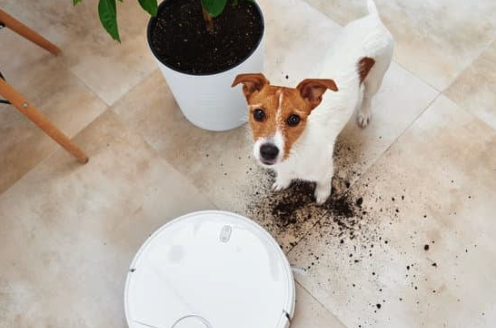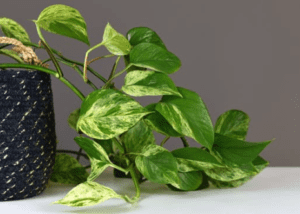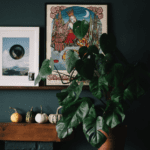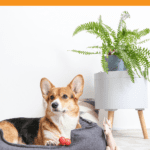November 9, 2023
Houseplants and Pets Living in Harmony
Houseplants and Pets Living in Harmony
It’s a conundrum many an interior designer, veterinarian, and pet owner has faced: Can houseplants and pets coexist without destroying one another?
The answer? Absolutely, yes! It may take a little planning, some research, and perhaps a home decor adjustment, but these beloved companions can live harmoniously in any home.
Both houseplants and pets add so much to our home lives: companionship, beauty, and fun. Yet a curious cat or dog who loves to dig can mess up your curated plant collection pretty quickly. And just one accident with a plant that is toxic to animals can cause a trip to the vet, or worse.
Creating a pet-friendly environment doesn’t mean you have to give up on having houseplants. To understand which plants are pet-friendly and how to create a happy environment for all the inhabitants of your home, read on.
Certain Plants Can Be Toxic to Animals
First thing’s first: some plants should never be kept in a house with pets, period. Just like certain plants are poisonous to humans, there are plants that can be very dangerous for pets, if ingested. Be sure to research each plant before bringing it into a home with animals. Some can pose significant health risks and can even cause death.
Here are a few of the most common houseplants to ban from any household with a pet:
- Lilies: extremely toxic to cats
- Sago Palms: highly toxic to dogs
- Pothos: toxic to all pets
There are a lot of unreliable sources out there, so go with expert advice. For a full list of which plants are safe or unsafe for pets, read the ASPCA’s complete guide. And save ASPCA’s animal poison control hotline on your phone: (888) 426-4435.
Choose Pet-friendly Houseplants
There are plenty of plants that give you all the benefits of growing an indoor garden and are totally safe for pets.
A few favorite houseplants for pet-owners:
- Spider Plant: Perfectly safe for both dogs and cats, lovely, air-purifying, and a great propagation plant
- Boston Fern: Another pet-safe option that add humidity to the indoor environment
- Areca Palm (aka Butterfly Palm): Offers gorgeous lush foliage is pet-friendly
These are just a few! Check out Architectural Digest’s awesome list of pet-friendly houseplants and how to use them in your interior design.
Pet-proof Your Plants
After you’ve made sure to select plants that are safe to have in the house with pets, the next challenge becomes where to put them.
Puppies of all ages love to dig in potted plants so make sure on-the-ground pots are tall enough to deter dogs from getting messy.
Only you know your cat’s nature, but in our experience, you should never underestimate how much a playful cat will attempt to attack dangling plant foliage! Keep plants’ wiggly bits out of reach for curious claws and paws.
Plant stands seem like a great option to keep green friends away from furry friends, but they present a typing hazard when pets get zoomies! Here are a few options ideas to help pet-proof your indoor plants.
- Hanging pots and baskets
- Small containers that adhere to windows
- High shelves and cabinets — although never 100% cat-proof!
If your pet is persistent in trying to reach your plants, consider using pet-friendly deterrents like bitter apple spray or aluminum foil around the base of the plants. These methods can discourage pets from nibbling on your greenery.
Use Pet-Safe Potting Soil & Fertilizer
Always use products that are safe for plants, animals, and humans on your houseplants. That means potting mix, fertilizer or compost, pesticides, and fungicides.
Never use harsh chemical fertilizer, pesticide, or other additives on your houseplants when there are pets around. (In our opinion, you should be avoiding those types of products even without pets! Humans and plants shouldn’t be exposed to harsh chemicals, either.)
- If you have pesky bugs on your houseplants, try apply neem oil spraying foliage with warm soapy water rather than using a pesticide
- Use only organic, food-safe fertilizer like True Organic
- Use organic potting soil
- Be sure to store plant food and other gardening supplies properly somewhere that pets can’t access
Houseplant and pets can coexist! The first step is understanding your pet and researching your plants. By learning about which plants are pet-friendly, taking necessary precautions, and planning ahead, you can create a beautiful and safe environment for everyone in your home.
Show us your True Organic Plants
#GrowWithTrue
www.trueorganic.earth




